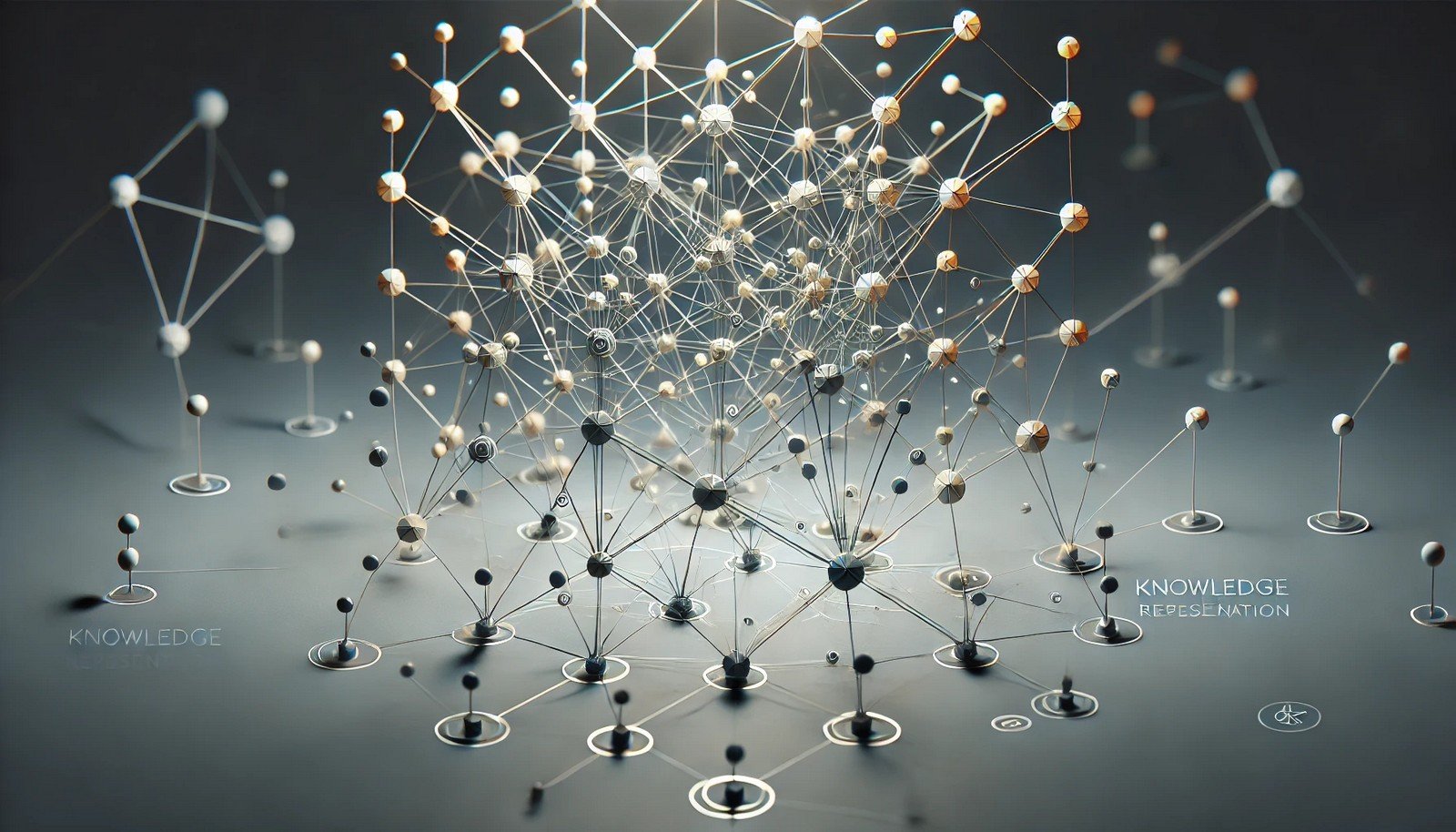Knowledge Representation Networks

Quick Navigation:
- Knowledge Representation Networks Definition
- Knowledge Representation Networks Explained Easy
- Knowledge Representation Networks Origin
- Knowledge Representation Networks Etymology
- Knowledge Representation Networks Usage Trends
- Knowledge Representation Networks Usage
- Knowledge Representation Networks Examples in Context
- Knowledge Representation Networks FAQ
- Knowledge Representation Networks Related Words
Knowledge Representation Networks Definition
Knowledge Representation Networks (KRN) are structures or systems used in artificial intelligence to represent knowledge by linking concepts through relationships. They enable machines to understand and use complex information by structuring it in a way that mirrors human cognitive processes. KRNs can take various forms, such as semantic networks, ontologies, and concept graphs, all of which help in organizing and accessing data for decision-making and inferencing.
Knowledge Representation Networks Explained Easy
Think of a KRN like a map connecting different cities. Each city is a piece of information, and the roads between them are the connections. When AI wants to “travel” from one idea to another, it uses these roads to find the shortest, most logical path.
Knowledge Representation Networks Origin
The concept of KRNs emerged from early AI research in the 1960s and 70s, with influences from psychology, linguistics, and philosophy. As AI evolved, so did KRNs, becoming essential for structuring complex information across various domains.
Knowledge Representation Networks Etymology
The term derives from "knowledge representation," referring to how information is stored and structured, and "network," indicating interconnected nodes that represent relationships between pieces of information.
Knowledge Representation Networks Usage Trends
KRNs are increasingly utilized in natural language processing, expert systems, and intelligent agents. Their use has grown in parallel with advancements in deep learning and big data, as more industries need structured ways to manage and use vast amounts of information.
Knowledge Representation Networks Usage
- Formal/Technical Tagging:
- Knowledge Representation
- Semantic Networks
- Ontologies
- AI - Typical Collocations:
- "knowledge representation model"
- "semantic network"
- "ontology-based system"
- "concept graph for reasoning"
Knowledge Representation Networks Examples in Context
- In healthcare, KRNs help structure patient information, enabling doctors to see connections between symptoms, treatments, and outcomes.
- KRNs power intelligent assistants, which use them to understand and respond accurately to user queries.
- They are foundational in recommendation engines that rely on understanding user preferences and relationships between products.
Knowledge Representation Networks FAQ
- What is a Knowledge Representation Network?
A system that represents knowledge by structuring concepts and their relationships, allowing AI to understand information logically. - How do KRNs differ from databases?
Databases store raw data without intrinsic relationships, whereas KRNs link data meaningfully, enabling reasoning. - What types of KRNs exist?
Common types include semantic networks, ontologies, and concept maps. - Are KRNs essential for AI?
Yes, they provide structured information for AI, supporting decision-making and inferencing. - Can KRNs handle unstructured data?
Yes, certain KRNs can process and organize unstructured data by extracting relevant relationships. - What role do KRNs play in natural language processing?
They help understand context and meaning by linking words and concepts. - How are KRNs created?
Through expert knowledge, automated learning from data, or a combination of both. - What challenges do KRNs face?
Issues include scalability, accuracy, and the complexity of accurately representing human knowledge. - Are KRNs used in AI outside research?
Yes, they are widely used in industry applications like search engines, recommendation systems, and chatbots. - How do KRNs contribute to personalized recommendations?
By structuring user preferences and product attributes, KRNs help suggest relevant items.
Knowledge Representation Networks Related Words
- Categories/Topics:
- Knowledge Graphs
- Machine Learning
- Data Representation
- Ontologies
Did you know?
Google’s Knowledge Graph, an example of a Knowledge Representation Network, was introduced in 2012 and has since transformed how search engines understand and link information, enhancing the accuracy of search results by connecting related concepts.
PicDictionary.com is an online dictionary in pictures. If you have questions or suggestions, please reach out to us on WhatsApp or Twitter.Authors | Arjun Vishnu | @ArjunAndVishnu

I am Vishnu. I like AI, Linux, Single Board Computers, and Cloud Computing. I create the web & video content, and I also write for popular websites.
My younger brother, Arjun handles image & video editing. Together, we run a YouTube Channel that's focused on reviewing gadgets and explaining technology.



Comments powered by CComment